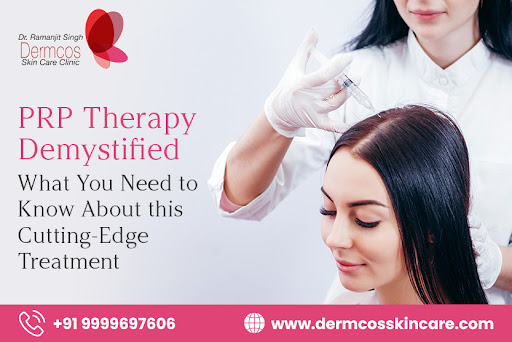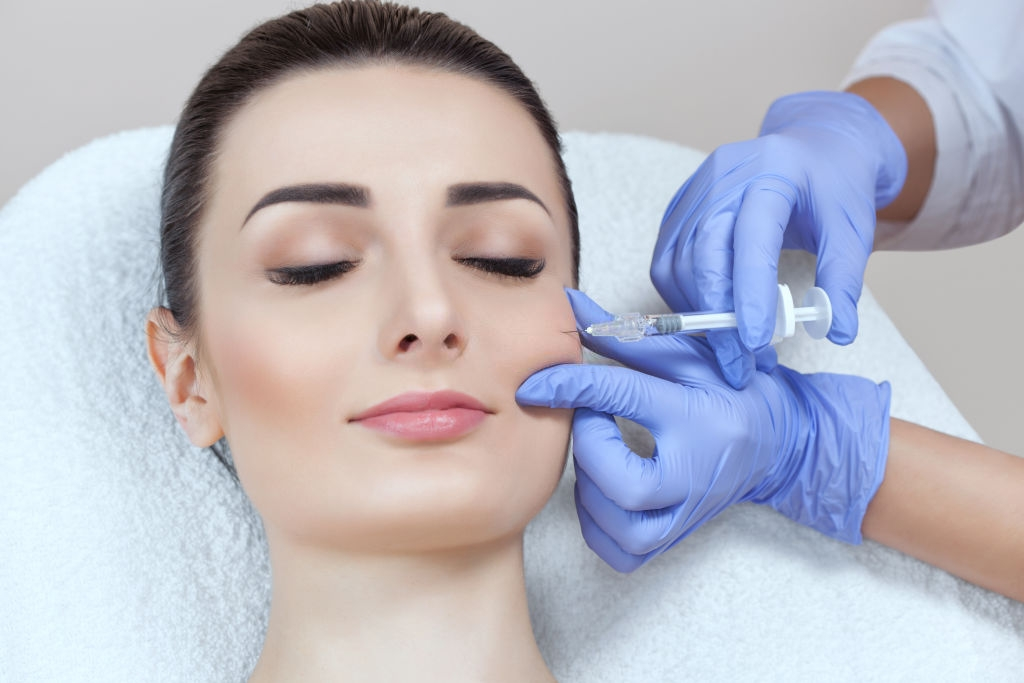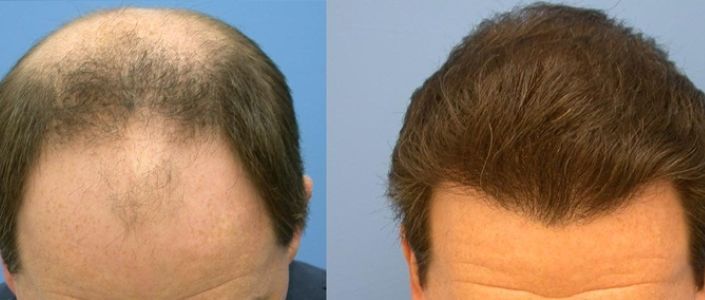Have you ever wondered if there’s a treatment that can harness the body’s natural healing powers to promote tissue regeneration? Look no further than PRP therapy. This innovative procedure, known as Platelet Rich Plasma therapy, has gained significant attention in the medical field for its potential in treating various conditions.
In this blog, we will delve into the world of PRP therapy, demystifying its science, exploring its applications, and shedding light on its benefits and risks. So, let’s embark on a journey to unravel the mysteries surrounding this cutting-edge treatment.
Understanding PRP Therapy
At its core, PRP therapy involves utilizing the patient’s own blood to extract platelet-rich plasma, which is then injected back into the body to stimulate healing. Platelets, small cell fragments in the blood, play a crucial role in clotting and wound healing. PRP therapy capitalizes on the concentrated growth factors present in platelets, which have been shown to aid in tissue repair and regeneration.
The Science Behind PRP Therapy
To comprehend how PRP therapy works, it’s essential to understand the scientific principles that underpin it. The process begins with a simple blood draw from the patient. The extracted blood is then subjected to centrifugation, a method that separates plasma, rich in platelets, from other blood components. The resulting platelet-rich plasma is further processed and activated before being skillfully injected into the targeted area. By introducing these concentrated growth factors, PRP therapy aims to enhance the body’s natural healing mechanisms.
Common Applications of PRP Therapy
PRP therapy has gained recognition and proven its efficacy in various medical fields, offering a versatile treatment option for a range of conditions. Let’s explore some of the common applications where PRP therapy has shown promising results:
- Osteoarthritis– PRP therapy has been used to alleviate symptoms and promote cartilage regeneration in patients with knee, hip, or shoulder osteoarthritis.
- Tendon Injuries– Conditions such as Achilles tendonitis, tennis elbow, and rotator cuff tears have been treated with PRP therapy to enhance tendon healing and improve function.
Dermatology
- Skin Rejuvenation– PRP injections can stimulate collagen production, improve skin texture, and reduce fine lines and wrinkles, making it a popular option for facial rejuvenation.
- Acne Scarring– PRP therapy has shown the potential in improving the appearance of acne scars by promoting tissue remodeling and regeneration.
Sports Medicine
- Sports Injuries– PRP therapy has been utilized to accelerate the healing of muscle strains, ligament sprains, and other sports-related injuries, helping athletes recover and return to their activities more quickly.
- Tendonitis– Conditions like patellar tendonitis, also known as jumper’s knee, and Achilles tendonitis have shown positive responses to PRP therapy, supporting tendon healing and reducing pain.
Hair Restoration
- Androgenetic Alopecia: PRP therapy has been used as a non-surgical option to promote hair growth and improve hair density in individuals with androgenetic alopecia (pattern baldness).
- Hair Loss due to Other Causes: PRP therapy has shown promise in stimulating hair regrowth in conditions such as alopecia areata or hair loss due to chemotherapy.
These are just a few examples of the numerous applications of PRP therapy. It’s important to note that the effectiveness of the treatment can depend on factors such as the severity of the condition and the patient’s overall health. Consulting with a healthcare professional specializing in PRP therapy is essential to determine its suitability for specific conditions or concerns.
Benefits and Risks of PRP Therapy
PRP therapy offers a range of benefits and carries minimal risks when performed by qualified professionals. Let’s explore the advantages and potential risks associated with PRP therapy
Benefits of PRP Therapy
- Non-invasive or Minimally Invasive– PRP therapy is a non-surgical or minimally invasive treatment option, reducing the risks and potential complications associated with more invasive procedures.
- Faster Recovery– PRP therapy can expedite the healing process by promoting tissue regeneration and enhancing the body’s natural healing mechanisms. This can lead to shorter recovery times compared to traditional treatments.
- Reduced Pain– PRP therapy has been observed to reduce pain in various conditions, such as osteoarthritis or tendon injuries. It can provide long-lasting pain relief and improve overall function.
- Improved Tissue Regeneration– The growth factors present in PRP stimulate cellular proliferation, angiogenesis, and tissue remodeling, promoting the regeneration of damaged tissues and improving their structure and function.
- Natural Approach– PRP therapy utilizes the patient’s own blood, reducing the risk of allergic reactions or adverse immune responses.
Risks and Side Effects
- Temporary Discomfort– Some patients may experience temporary discomfort or pain at the injection site. However, this is generally mild and subsides within a short period.
- Infection or Bleeding– As with any medical procedure involving injections, there is a minimal risk of infection or bleeding at the injection site. However, proper sterilization techniques and adherence to medical protocols significantly minimize these risks.
- Lack of Standardization– PRP therapy is a rapidly evolving field, and treatment protocols may vary.
It’s vital to approach the procedure with accurate information and to choose a reputable healthcare provider who has experience and training in performing PRP therapy. This ensures the highest level of safety and increases the likelihood of successful outcomes.
The PRP Therapy Procedure
Let’s take a closer look at what a typical PRP therapy session entails. The process starts with a comprehensive assessment of the patient’s medical history and suitability for the treatment. Once the patient is deemed a candidate, a blood sample is obtained, usually from the arm. The blood is then processed using a centrifuge to separate the platelet-rich plasma.
The prepared PRP is activated to maximize its regenerative potential and carefully injected into the targeted area. While the duration of the procedure can vary, PRP therapy is generally completed within a single session, although multiple sessions may be required for optimal results.
Preparing for PRP Therapy
Before undergoing PRP therapy, patients must follow certain pre-treatment guidelines. These guidelines often include abstaining from specific medications or activities that may interfere with the procedure or compromise the healing process. Consulting with a healthcare professional is essential to determine the patient’s candidacy for PRP therapy and to ensure the best possible outcome.
Post-Treatment Care for PRP Therapy
Following PRP therapy, it is important to adhere to certain guidelines to promote healing and maximize the benefits of the treatment:
- Activity Modification– Depending on the treated area, patients may need to modify their activities or temporarily avoid strenuous exercises or movements that could strain the treated area. This allows the body to focus on healing and prevents unnecessary stress on the tissues.
- Ice and Compression– Applying ice packs or using compression garments as recommended by your healthcare provider can help reduce swelling and discomfort in the treated area. This can be especially beneficial in the initial days following the procedure.
- Medication and Topical Treatments– Your healthcare provider may prescribe pain medications or recommend over-the-counter pain relievers to manage any discomfort. Additionally, they may suggest specific topical treatments or skincare products to aid in the healing process and optimize the results.
- Follow-up Appointments– It is crucial to attend any scheduled follow-up appointments with your healthcare provider. These appointments allow them to monitor your progress, address any concerns or questions, and make any necessary adjustments to your treatment plan.
It’s important to note that individual healing timelines can vary. While some patients may experience immediate improvements, others may see gradual progress over several weeks or months. Patience is key, as the regenerative effects of PRP therapy take time to manifest. If you experience any severe or prolonged side effects, or if you have any concerns during your recovery, it is essential to promptly contact your healthcare provider for guidance and support.
Cost and Accessibility
While PRP therapy offers promising benefits, it’s essential to consider the cost and accessibility factors associated with this cutting-edge treatment. The cost of PRP therapy can vary depending on various factors, including the location, the specific condition being treated, the expertise of the healthcare provider, and the number of sessions required. In general, the cost of a PRP therapy session in India can range from INR 4,500 to INR 15,500 per session.
The accessibility of PRP therapy also depends on factors such as the availability of trained healthcare professionals and specialized clinics offering the treatment. Larger cities tend to have a higher accessibility rate compared to rural areas, where access to PRP therapy may be limited. However, as the popularity and demand for PRP therapy continue to grow, accessibility is gradually improving across different regions of India.
Conclusion
In conclusion, PRP therapy represents an exciting advancement in regenerative medicine, utilizing the body’s natural healing abilities to promote tissue repair and regeneration. By understanding the science behind PRP therapy, exploring its common applications, and recognizing its benefits and minimal risks, you can make informed decisions about its potential for your specific needs.
If you are considering PRP therapy, seek the expertise of qualified healthcare professionals, such as those at Dermcos Skin Care Clinic, who specialize in this cutting-edge treatment. With their guidance, you can embark on a personalized journey toward revitalization and discover the transformative potential of PRP therapy for your skin and overall well-being. Take the first step today and unlock the future of healing with PRP therapy.




